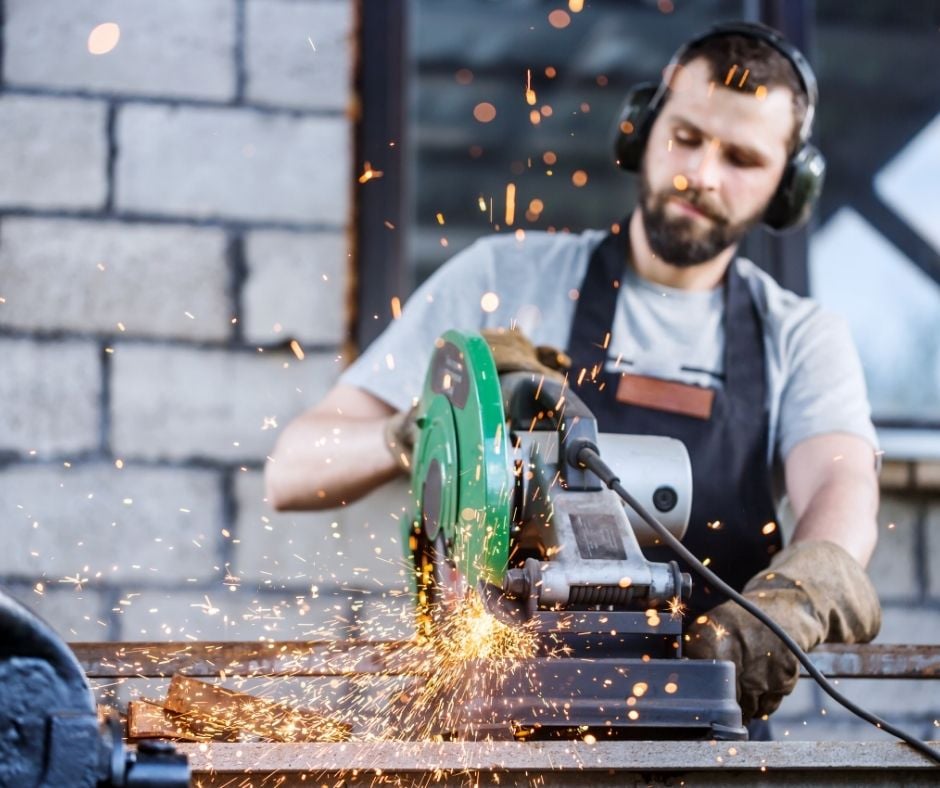
There are many ways sound is transmitted in and around your home that can cause troublesome noise issues. The good news is that there are a variety of products that can significantly dampen or completely deaden noise depending on its source. While performing a sound test can be performed to create a more custom, technical solution, there are steps you can take as a homeowner to get to the best solution as quickly as possible.
Below are common residential noise issues and some of the more effective soundproofing products and tips to effectively reduce noise and create a calmer, more serene environment in your home.
Residential Airborne Noise “The Noisy Neighbor”
Soundproofing a single/room unit from the noise of surrounding rooms/units is one of the top requests for soundproofing companies. Whether it’s the noisy neighbor above, next door, or a single room to which you are looking to reduce noise transmission, there are a few relatively simple solutions to be aware of to resolve the noise issue.
Walls
A typical wall in a residential house has an STC of 33, meaning that it can attenuate 33 dB from one side of the wall to the other. Soundproofing the wall with a noise barrier or sound absorbing material can significantly increase the STC to over 50. The ability to reduce sound transmission through a wall requires an understanding of the mechanisms by which sound is transmitted through the wall. This will determine the appropriate mix of sound barrier and sound absorption materials to be used in an effective soundproofing strategy. Treating a wall for noise may require some construction to install the proper materials
Doors
To keep noise from being transmitted through a door, you can use an adjustable acoustical door seal. Door seals are available as a “screw on” to the bottom of the door or as an inset into the bottom of the door.
Ceilings/Floors
Noise coming through ceilings is right at the top of the list for noise complaints. Depending on the ceiling height, you can install a “drop ceiling” decoupling it from the original ceiling and installing a noise barrier product. Additionally, impact noise arising from footfalls and airborne noise from radio, TV, and speech can be resolved with a sound dampening carpet underlayment to reduce transmission of noise. This underlayment reduces the transfer of impact and airborne noise through floor systems.
Where to start
- Start with measurements of the area that needs soundproofing. Take note of outlets, windows, doors, or other irregularities in the wall’s surface through which sound can travel.
- If you consult with a soundproofing expert, take pictures of the surface to be treated for the consultation.
- Purchase your soundproofing products: Noise Barrier - MLV, Sealant, Putty Pads to seal outlets, and Noise absorption materials as needed.
If you are unable to do the work yourself, generally a drywall contractor or insulation installer can complete the work for you. We work with contractors all over the country, giving them specific instructions on how to install the materials you have purchased for your specific noise problem.
Outdoor Noise: Road, Airplane, Train Noise
Road noise is a very common noise issue and it will continue to get worse as our communities continue to grow. Windows are generally the weakest link to the outside world.
Windows
One of the most cost-effective solutions is to add a “window insert” or clear noise barrier over your existing windows. These are optical quality acrylic panes mounted inside an aluminum frame. The clear acrylic barrier has a magnetic strip, which is molded into the frame. It is up to 18 times stronger than glass. A metal frame is installed either on the inside or to the outside of your window. This provides up to 70% noise reduction and increases the window energy rating. The inserts come completed and ready to install.
Where to start
- Start with measurements of your windows, specifically where the sound is loudest and work outward from there.
- Take pictures. This will help understand how to best fasten the product.
- Send your pictures and measurements to an acoustic expert to begin the process of pricing your custom-made inserts.
- Don’t forget accessories. Acoustical sealant, tape and putty pads can help with basic repairs and come with soundproofing capabilities beyond regular tape or sealant.
Purchasing your inserts from a soundproofing company will ensure product integrity. If you are not comfortable installing the inserts yourself, generally a carpenter can complete the installation.
The first steps to peace and quiet start with measurements, photos, and identifying your budget. As engineers and consultants Sonic-Shield can assist you in selecting the right products and proper installers and work with them through the entire process.




